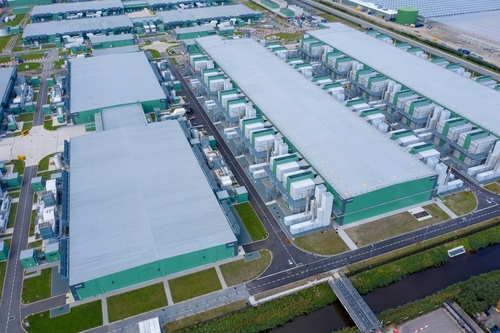
U.S. data centers’ increasing energy demands will lead to additional gas demand, according to research released Oct. 22 by S&P Global Ratings, and several companies operating in Pennsylvania could gain the resulting benefits.
The growing demand for electricity by data centers will require additional natural gas to support generation, necessitating a response from the North American midstream energy sector, says the S&P research, entitled “Data Centers: More Gas Will Be Needed To Feed U.S. Growth.”
“North American midstream energy suppliers are already benefiting from increased revenues due to geopolitical energy security concerns,” the report says. “Additional demand from data centers should contribute to at least a decade of supply growth that should be supportive of midstream sector credit quality, though the benefits will accrue most to operators in gas fields near data center hotspots.”
S&P estimates that the power demand for data centers will lead to gas demand of between 3 billion cubic feet per day (bcf/d) and 6 bcf/d by 2030, from a starting point of almost none today.
S&P Global Ratings thinks that reports of the decline of the North American midstream energy sector are exaggerated, and says that the sector, which ships hydrocarbons to domestic and international markets, benefits from a renewed focus on energy security — largely due to the wars in Ukraine and the Middle East — and is poised to profit from data centers, which need reliable energy to support operational continuity, a need that, in turn, is creating new and increasing demand for gas.
“We believe that combination of data center demand and ongoing security concerns will underpin hydrocarbon revenues, and particularly natural gas demand, for at least the next decade,” S&P says.
The S&P researchers also say that increased electricity demand from data centers should benefit the midstream industry and prove an additional source of growth capital and contracted cash flow.
S&P expects most of the benefits from its estimated 3-6 bcf/d increase in demand due to data centers to accrue to a few of the largest natural gas transportation companies with assets in the Texas area, or the flexibility to move gas from the Marcellus shale region to the Southeast, to supply data center construction in Georgia, Alabama, and Tennessee.
“That said, data-center-driven demand is unlikely to provide material upside to our credit ratings or outlooks on these companies (despite our view that this growth is generally low risk),” the new research says. “We continue to believe that the growth of liquefied natural gas [LNG] and incremental residential and industrial demand for gas through 2030 will more meaningfully influence creditworthiness for the gas-focused midstream companies that we rate.”
Among the midstream companies that S&P says are best positioned to benefit from data center energy demands include TC Energy Corp., which has a vast pipeline network that gives it size and scale advantages.
For instance, its Columbia Gas Transmission system covers the Marcellus and Utica shale of western Pennsylvania and eastern Ohio, as well as West Virginia and areas east toward the main data center corridor of Northern Virginia.
“However, the company’s projects are slated toward LNG demand in Canada and the U.S., and demand growth in Mexico,” S&P says.
Another midstream company in a good position is DT Midstream Inc. (DTM), which generates 65 percent of its EBITDA from natural gas pipeline assets in the heart of the Marcellus and Utica Shale plays and Haynesville Shale, according to S&P.
It owns pipeline assets with larger partners Enbridge and TC Energy, which could provide access to their opportunities, the firm says, while DTM’s Vector Pipeline, Nexus system, and Millennium Pipeline cross the PJM and Midcontinent Independent System Operator service territories and are near data center development hot spots.
Another is Equitrans Midstream Corp., which EQT Corp. acquired, giving it a logistical advantage in the Marcellus Shale region, where data centers could increase natural gas demand despite infrastructure constraints, says S&P.
“The ability to expand the MVP to up to 2.5 bcf/d could facilitate supply to the Virginia data center corridor,” the research report says. “EQT’s production of about 6 bcf equivalent per day and a newly acquired midstream network provide a competitive advantage.”
At the same time, the promise of data center energy demand is sparking interest among investors in midstream companies and the industry itself, though S&P expects the new demand will have more significant credit implications for the power and regulated utility sectors than for midstream companies.
Nonetheless, this new source of demand reinforces the firm’s view that natural gas and its related infrastructure will remain a vital part of the energy demand equation for at least the next decade, if not longer.